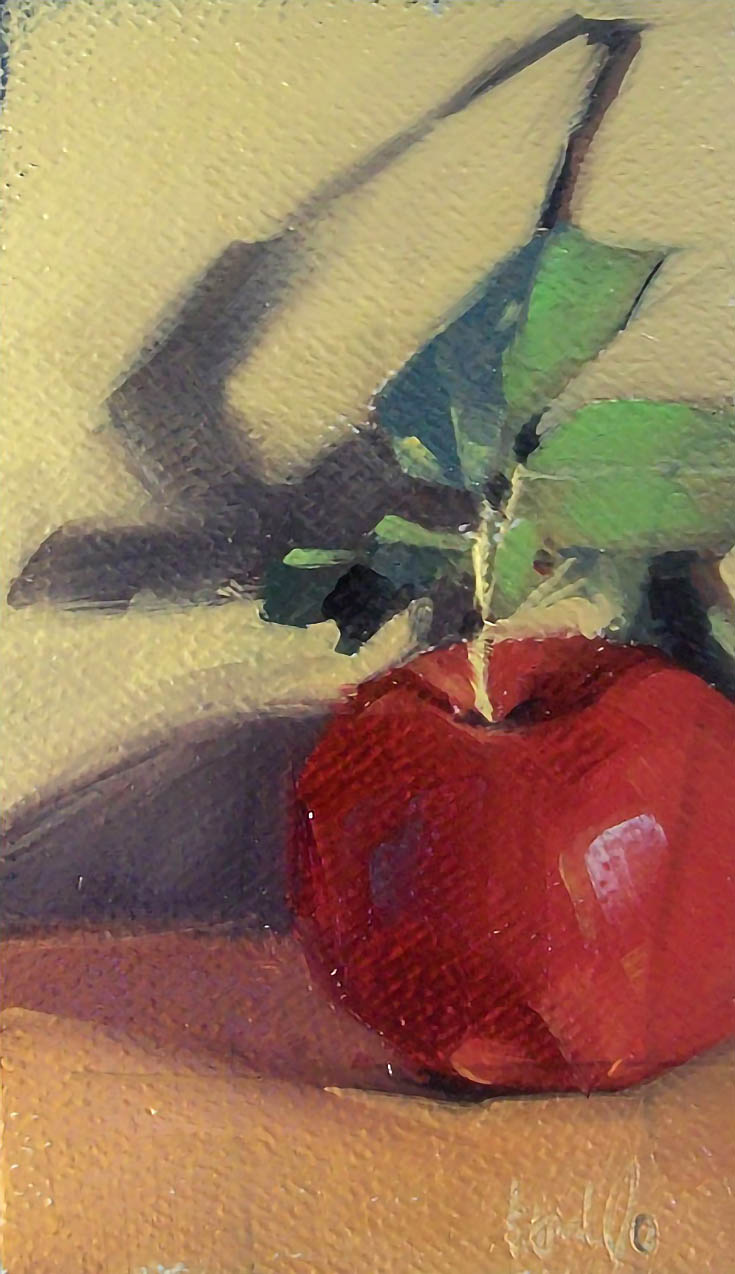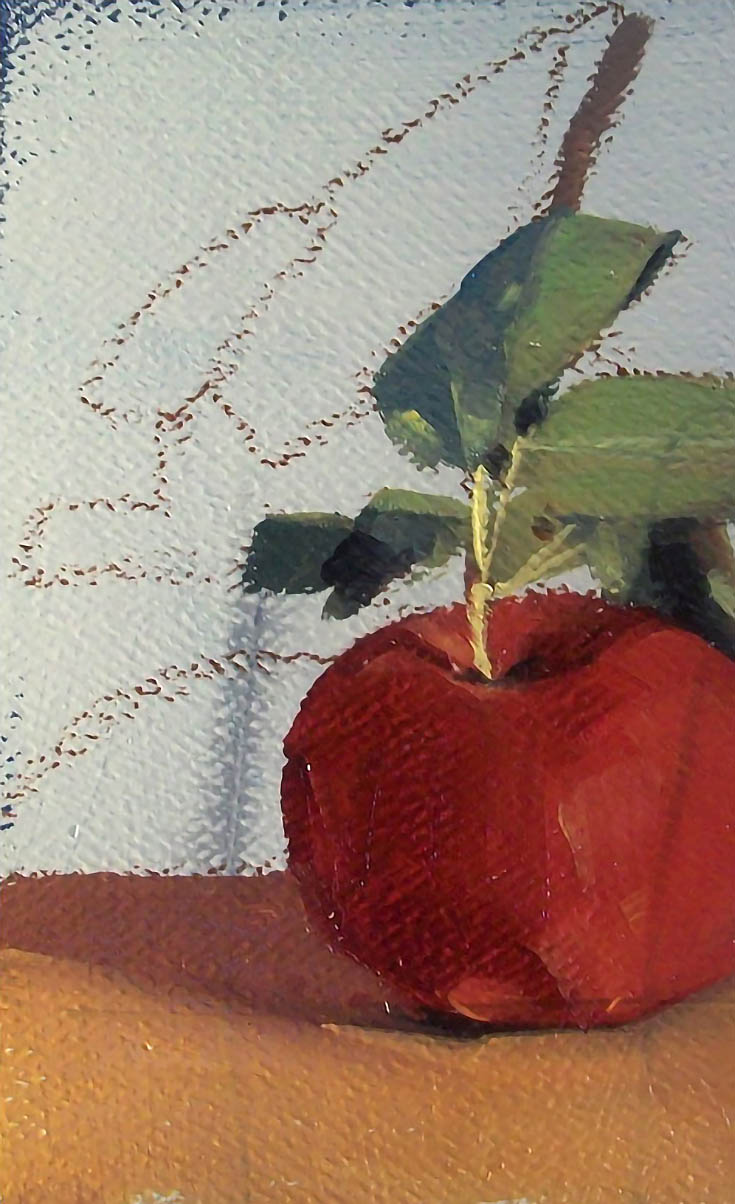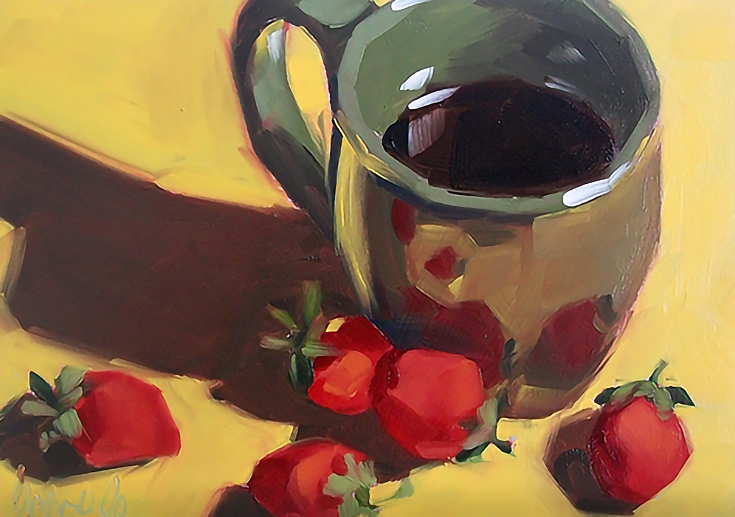In previous tutorials I have talked about how important light sources are in painting, but on the other end of the spectrum, shadows can play a big role in many ways as well. A good contrast of light and dark will always grab the viewer’s eye and make them take a closer look.
Here are 5 ways I use shadows in oil painting:
1. To define a subject
I love to use shadow to help define, or carve out, my subject. I say carve out because sometimes painting can feel like sculpture when you create edges and the illusion of depth. In this example the contrast between the light background and the shadow really define the profile of the angel.
Also, the subtle changes of value within the shadow area create the features of her face and hair. That combination of high contrast and subtle shifts of value make a beautiful finished piece.
2. As a design element
Cast shadows create the most interesting shapes. With still life you can really have fun manipulating your light source to elongate or intensify the shadows.
I specifically set up the apple still life above to create an interesting shadow for the composition. I painted the apple in first to show the difference with and without the shadow:
You can see how the shapes are an important part of the finished work.
3. To ground an object
A common issue for beginning painters can be the floating object. Unless it is intentional, you want your subject to be grounded in some way, not floating in mid air, and a simple shadow does the trick.
In this example you know the girl is sitting in the grass, but take the shadow away and she would just be floating on a green background.
Same with this still life. The shadows make the objects feel like they are sitting on a yellow table. Simple, but very important.
4. To create visual depth
An easy way to add depth to your painting is to use shadow. It helps create the foreground, middleground and background. This blue house, for example, would look pretty flat without the strong shadows cast by the sun.
You automatically know which parts of the house come forward and which ones fall back. It helps give the illusion of 3 dimensional space.
5. To convey feeling or emotion
Shadows can also be used to convey a feeling or emotion in your painting. You may use soft shadows for something lovely or comforting, or harsh shadows for a more sinister or dark feeling.
In this final example the shadows are used to create more of an attitude. These girls look mischievous and defiant, like they work for the mob making deliveries or something. Your options are really endless and fun to explore.
In the end, shadows are just another fun element to explore and play with in your compositions. Don’t be afraid to experiment and find new ways for shadows to creep into your future works. Happy painting!
This post may contain affiliate links.







